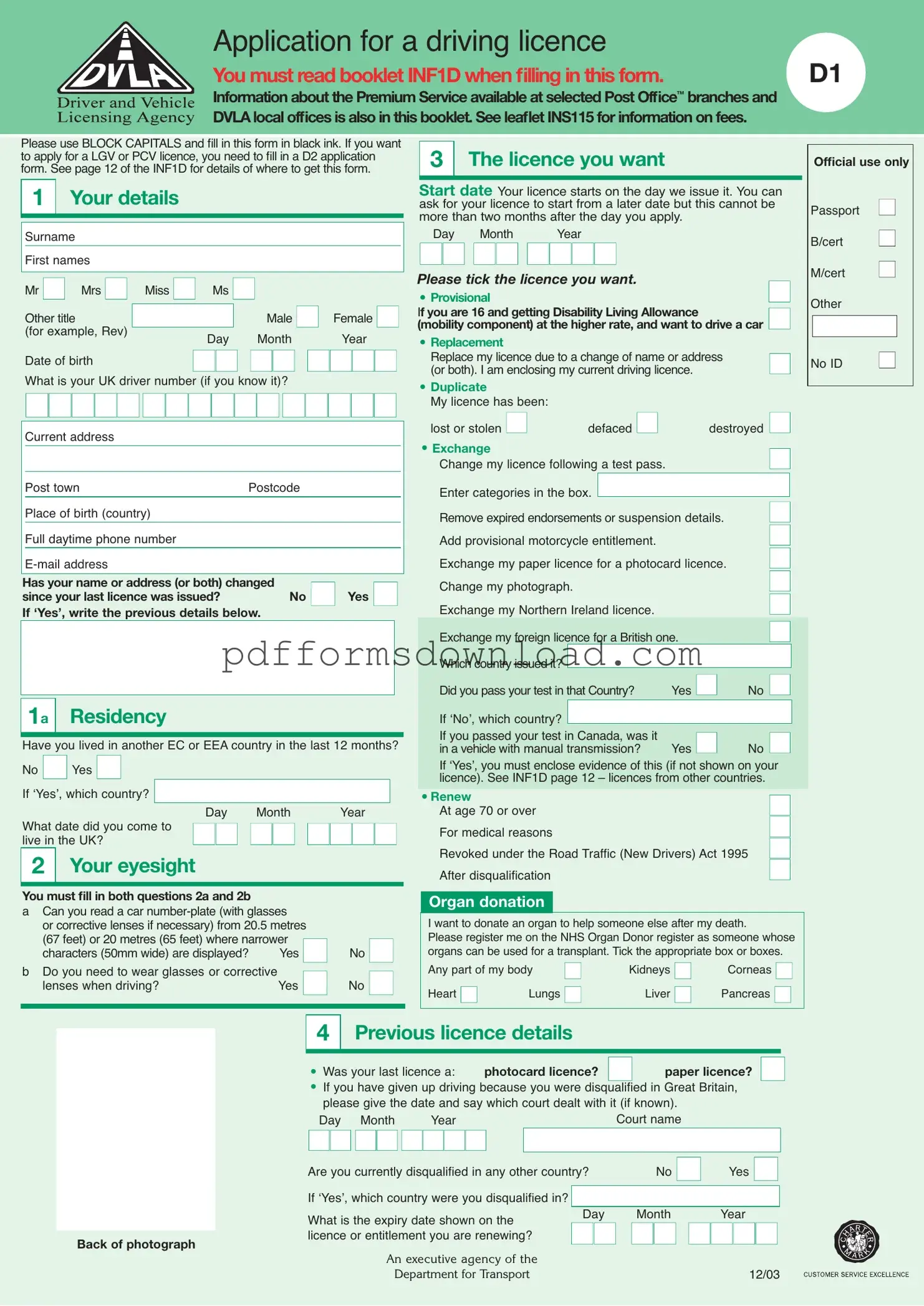What is the D1 DVLA form used for?
The D1 DVLA form is used to apply for a driving licence in the UK. This includes applying for a new licence, replacing a lost or stolen licence, or exchanging a foreign licence for a British one. The form is essential for anyone seeking to obtain or renew their driving privileges.
Who needs to complete the D1 DVLA form?
Anyone who wants to apply for a UK driving licence must complete the D1 DVLA form. This includes first-time applicants, individuals renewing their licences, and those who need to replace lost or stolen licences. If you are applying for a Large Goods Vehicle (LGV) or Passenger Carrying Vehicle (PCV) licence, you will need to use a different form, the D2.
What information do I need to provide on the D1 form?
You will need to provide personal details such as your name, address, date of birth, and contact information. Additionally, you must indicate your residency status, eyesight capability, and any medical conditions that could affect your ability to drive. You will also specify the type of licence you are applying for and provide identification documents as required.
Can I apply for a driving licence if I have a medical condition?
How do I prove my identity when submitting the D1 form?
You must provide acceptable documents to prove your identity. These can include a passport, UK birth certificate, or an identity card from the European Economic Area (EEA). If your name has changed, you will also need to provide documents linking your current name to your previous name, such as a marriage certificate or deed poll.
What happens if I make a mistake on the D1 form?
If you make a mistake on the D1 form, it is important to correct it before submitting. Incorrect information can delay the processing of your application. If you realize a mistake after submission, you may need to contact the DVLA to rectify it, which can extend the time it takes to receive your licence.
Is there a fee associated with submitting the D1 form?
Yes, there is a fee for processing your application, which varies depending on the type of licence you are applying for. You can find detailed information about the fees in leaflet INS115. Ensure that you include the correct fee with your application to avoid delays.
How long does it take to process the D1 form?
The processing time for the D1 form can vary. Generally, it may take up to three weeks to receive your driving licence after submitting the application. If you are using the Premium Service at selected Post Office branches, processing may be faster. Always check for the latest processing times on the DVLA website.
What should I do if my application is rejected?
If your application is rejected, you will receive a notification explaining the reason. You can address the issues mentioned and reapply. It is advisable to carefully review the requirements and ensure that all information is accurate before submitting a new application.
